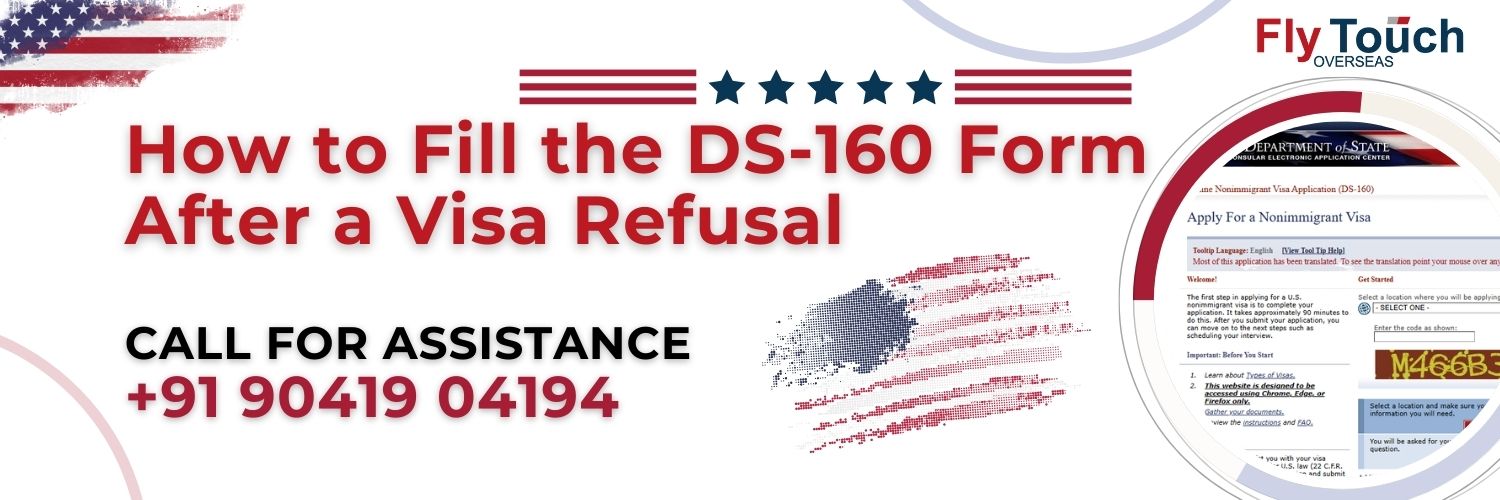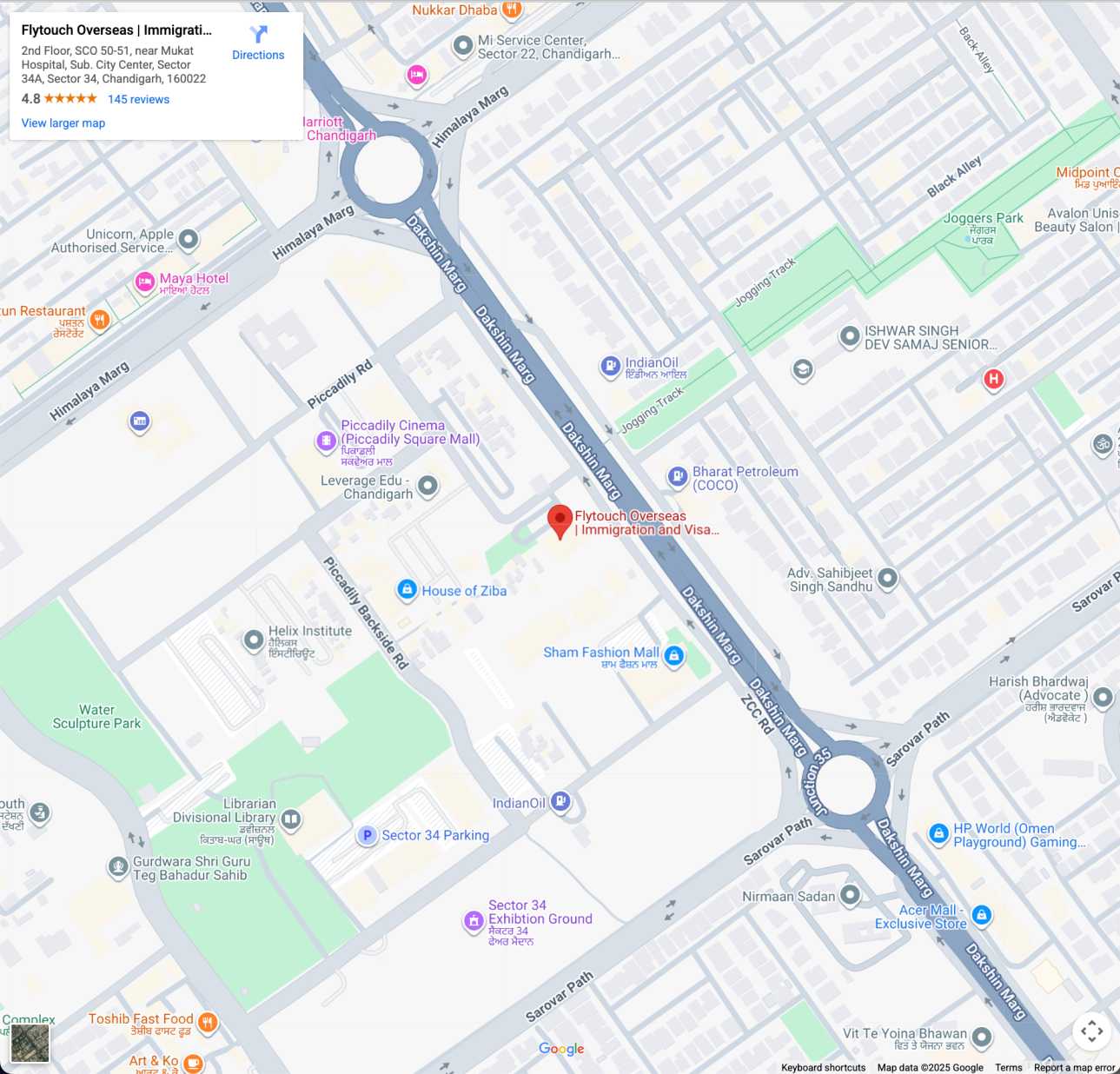How to Fill the DS-160 Form After a Visa Refusal
When faced with a visa refusal, it is common to feel discouraged. However, it is important to remember that a refusal does not mean the end of your visa application journey. The DS-160 form plays a critical role in reapplying for a U.S. visa. In this detailed guide, we will walk you through the necessary steps to correctly fill out the DS-160 form after a visa refusal, ensuring that you improve your chances for a successful application.
Understanding the DS-160 Form
The DS-160 form is an Online Nonimmigrant Visa Application form required by the U.S. Department of State for all nonimmigrant visa applications. This form collects the necessary information about the applicant, including personal details, travel plans, and background information. Accurate and thorough completion of this form is crucial, especially after a visa refusal.
Step By Step Process
Step 1: Reflect on the Reasons for Refusal
Before you start filling out the DS-160 form again, take time to carefully review the reason(s) for your previous visa refusal. This information is typically provided in the refusal letter or during your visa interview. Understanding the cause of refusal is vital in avoiding the same mistakes and addressing any potential issues in your new application.
Common Reasons for Visa Refusal
- Incomplete or inaccurate information: Ensure that all details in your DS-160 form are correct and consistent.
- Insufficient financial evidence: Demonstrate your ability to support yourself financially during your stay in the U.S.
- Lack of ties to your home country: Provide strong evidence of your ties to your home country, such as employment, family, or property.
Step 2: Gather Necessary Information and Documents
To successfully fill out the DS-160 form, you need to have the following information and documents at hand:
- Passport information: Your passport number, issuance, and expiration dates.
- Travel itinerary: Details of your planned trip, including dates and places you intend to visit.
- Previous U.S. travel history: Information about any past visits to the U.S.
- Family details: Information about your family members, including their occupations and contact details.
- Employment and education history: Details of your current and previous employment, as well as your educational background.
Step 3: Access the DS-160 Form Online
To begin, visit the official Consular Electronic Application Center (CEAC) website and select the DS-160 form. You will be required to choose the U.S. Embassy or Consulate where you intend to apply for your visa. It is important to select the correct location, as this cannot be changed once the form is submitted.
Creating a New Application
- Unique Application ID: When you start a new DS-160 form, you will be given a unique application ID. Save this ID for future reference, as you will need it to retrieve and edit your application before submission.
- Security Questions: You will also be asked to select and answer security questions, which are used to protect your application.
Step 4: Carefully Fill Out the DS-160 Form
Filling out the DS-160 form after a visa refusal requires special attention to detail. Here are some key sections where accuracy is paramount:
Personal Information
Ensure that your name, date of birth, nationality, and other personal details are entered exactly as they appear in your passport. Any discrepancies can lead to complications.
Travel Information
Provide accurate information about your travel plans, including the purpose of your trip and the intended length of stay. Be specific about the locations you plan to visit in the U.S.
Previous U.S. Travel
If you have previously traveled to the U.S., provide detailed information about your visits, including the dates of travel, visa types, and any previous visa refusals. Be honest and transparent about your travel history.
Security and Background Information
This section includes questions related to your health, criminal history, and involvement in activities such as terrorism or espionage. Answer these questions truthfully and provide explanations where necessary. Any attempt to conceal information can result in a visa refusal.
Step 5: Review and Verify Your Information
Before submitting the DS-160 form, review all the information carefully. Double-check for any errors or inconsistencies that could raise concerns during your visa interview. It is advisable to have someone else review your application as well, as a fresh set of eyes might catch mistakes that you have overlooked.
Step 6: Submit the DS-160 Form and Print the Confirmation Page
Once you are confident that all the information is accurate, submit the DS-160 form. After submission, you will receive a confirmation page with a barcode. Print this page, as it is required for your visa interview.
Important Note:
- Do not submit multiple DS-160 forms: Submitting more than one form can cause delays or even result in a visa refusal. If you need to make changes after submission, start a new form rather than submitting multiple forms.
Step 7: Schedule and Prepare for Your Visa Interview
After submitting the DS-160 form, the next step is to schedule your visa interview at the U.S. Embassy or Consulate. The interview is a critical part of the visa application process, especially after a refusal. Prepare thoroughly by reviewing your DS-160 form, gathering all necessary documents, and being ready to answer questions confidently and truthfully.
Documents to Bring to the Interview
- Passport: Ensure your passport is valid for at least six months beyond your intended stay in the U.S.
- DS-160 confirmation page: This is mandatory for your interview.
- Visa application fee receipt: Proof that you have paid the visa application fee.
- Supporting documents: Bring any additional documents that support your application, such as financial statements, employment letters, or evidence of ties to your home country.
Step 8: Be Honest and Consistent During the Interview
During your visa interview, the consular officer will ask questions based on the information provided in your DS-160 form. It is essential to be honest and consistent in your responses. Any discrepancies between your interview answers and the DS-160 form can lead to a visa refusal.
Tips for a Successful Visa Interview
- Stay calm and confident: Approach the interview with a positive attitude.
- Be concise and clear: Answer questions directly without providing unnecessary information.
- Provide supporting evidence: If asked, be ready to present documents that support your application.
Conclusion
Filling out the DS-160 form after a visa refusal requires careful attention to detail and thorough preparation. By understanding the reasons for your previous refusal, gathering all necessary information, and providing accurate and consistent details, you can significantly improve your chances of obtaining a U.S. visa.
FAQs
Filling out the DS-160 form after a visa refusal can be challenging. Here are some frequently asked questions to assist you:
-
Should I disclose my previous visa refusal on the new DS-160 form?
Yes, you must honestly disclose any prior visa refusals when completing the DS-160 form. Concealing this information can lead to further complications or refusals.
-
How can I address the reasons for my previous visa refusal in the new application?
Carefully review the reasons provided for your prior refusal, which are typically outlined in the refusal letter or explained during your visa interview. Address these issues by providing accurate information and additional supporting documents in your new DS-160 form.
-
Is it necessary to create a new DS-160 form after a visa refusal, or can I use the previous one?
You should complete and submit a new DS-160 form for each visa application, especially after a refusal. This ensures that all information is current and accurately reflects any changes or corrections.
-
What additional documents should I prepare to support my DS-160 form after a visa refusal?
Gather documents that address the specific reasons for your previous refusal. This may include financial statements demonstrating sufficient funds, evidence of strong ties to your home country, or corrected information if inaccuracies were an issue.
-
How can I ensure accuracy when filling out the DS-160 form after a visa refusal?
Double-check all entries for accuracy and consistency. Consider seeking assistance from a trusted individual or immigration consultant to review your application before submission.



